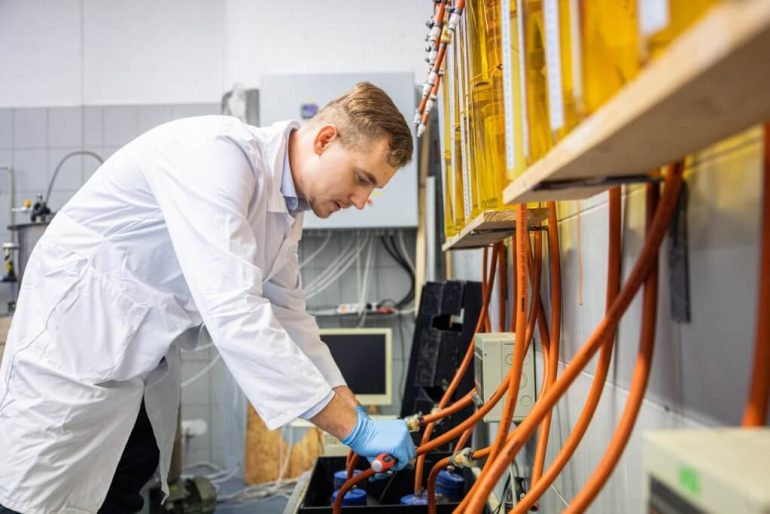The rise in energy prices is leading wastewater treatment plants to strengthen their energy self-sufficiency. Some companies have addressed the situation by building photovoltaic power plants near their operations, for example. However, scientists from the Faculty of Agronomy at Brno’s Mendel University (AF MENDELU) are currently testing an alternative way of generating energy, focusing on the joint fermentation of waste sludge and gastro waste to produce biogas.
In 2020 alone, more than 970,000 tons of gastrowaste were produced in the Czech Republic. Some municipalities try to compost waste from canteens and restaurants. However, the process of processing this type of waste has its own specific challenges.
“The composition of gastrowaste changes every day, depending on what dishes the restaurant is cooking. Food also contains proteins and various spices, which can significantly affect the fermentation process,” explained researcher Pavel Suchý from the Institute of Agricultural, Food and Environmental Technology at AF MENDELU.
The scientists therefore decided to combine the gastrowaste with sewage sludge, of which several hundred thousand tons is produced during the treatment of waste water each year. “The content of substances in gastrowaste is very variable, so it is more appropriate to use this waste in the co-fermentation process with other material that maintains stability during processing,” explained Suchý.
The combination with sewage sludge was chosen with regard to wastewater treatment plants, which already use sludge to increase energy self-sufficiency. However, combining it with gastrowaste will allow more energy to be produced. “Restaurant waste is rich in lipids and carbohydrates, which are the most suitable substrate for the production of biogas in the fermentation process,” said Suchý. “We assume that by adding it to sewage sludge, we can increase the energy self-sufficiency of wastewater treatment plants by up to 70 to 80%.” Currently, sewage treatment plants obtain roughly half of the energy they need from sludge.
Another advantage of joint fermentation of sewage sludge and gastrowaste is that special authorization is required for the processing of both types of these wastes. “In both cases, we are dealing with potentially infectious biological waste. Among other things, different bacteria can be present in the waste – for example salmonella or Escherichia coli. The advantage is that treatment plant biogas stations already have this special authorization and the necessary technology,” explained Suchý. Joint processing of restaurant residues and waste sludge should therefore not be a problem legislatively.
Scientists are currently working with a company that collects waste from restaurants and canteens in Brno. “In the laboratory, we will test different ratios of waste sludge and gastro waste. We will also test different temperatures during the anaerobic fermentation process to find out which conditions are most suitable for the production of biogas – specifically biomethane,” said Suchý.
According to Suchý, practical interest in new technologies in the field of waste processing is high. Scientists will know the results of the new research at the end of this year.









